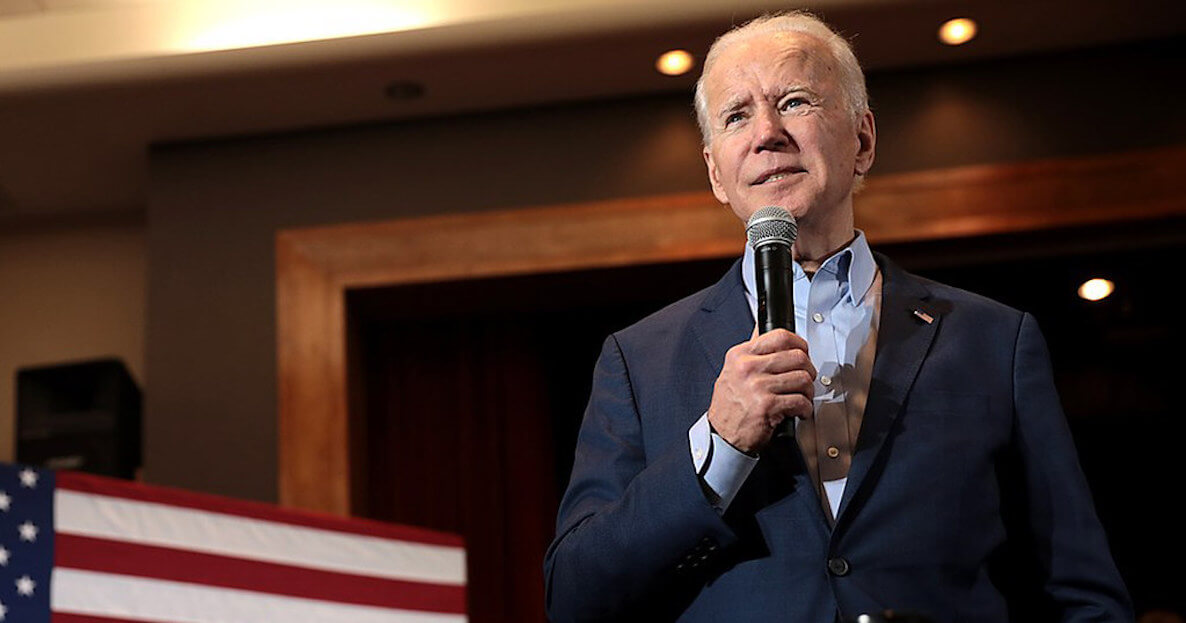As Congress moves closer to enacting President Biden’s $1.9 trillion American Rescue Plan, focus on the elements of a broader recovery package is intensifying. While the relief package addresses the urgent, immediate challenges of the pandemic (including state and local fiscal relief) and accelerated vaccine distribution, the recovery package is intended to address the structural challenges that pre-date the public health crisis: geographically unbalanced economic growth, accelerating climate change, growing income inequities and a reckoning with systemic racism. The recovery package is the vehicle for achieving President Biden’s vision for “Building Back Better.”
President Joe Biden made investments in innovation a focal point of his Build Back Better agenda during the campaign. Biden’s proposals included calls for substantial investments in research & development through existing agencies like the National Institutes of Health, the National Science Foundation and the Departments of Energy and Defense. He also called for diversifying growth through investments in technology hubs around the country.
Inclusion can be innovative, creating new ways of tackling traditional problems via technological advancement and entrepreneurial dynamism.
Biden’s calls have been echoed in important legislation introduced in the House and Senate, including the Endless Frontier Act and The Innovation Centers Acceleration Act. (US Senators Introduce Bill to Allot $80B to Bolster National Innovation; Sen. Chris Coons Quoted (executivegov.com)) All of these proposals build on excellent work (The Case for Growth Centers (itif.org)) done by Mark Muro, Rob Atkinson and others.
We would take these legislative proposals one step further (and geographically deeper) and call for explicit, targeted federal investment in innovation districts.
As we have described elsewhere, the spatial geography of innovation is shifting in the world towards urban centered (or urban-like) innovation districts. The antithesis of monoculture research parks, innovation districts combine academic institutions, corporate R&D, startups, and entrepreneurial support organizations in mixed-use communities that promote creativity and collaboration.
![]() In addition to catalyzing the growth of jobs and businesses, innovation districts incubate new solutions to urgent societal challenges, from combating climate change and infectious diseases to supporting inclusive workforce development and minority entrepreneurship. Districts are also economic hubs that are evolving quickly given the heightened level of strategy design and delivery on the part of local stakeholders. As outlined in The Evolution of Innovation Districts (GIID.org), their work has created integrated approaches to leveraging R&D, place, and networking assets, new “collaborate to compete” governance structures, and creative financing mechanisms.
In addition to catalyzing the growth of jobs and businesses, innovation districts incubate new solutions to urgent societal challenges, from combating climate change and infectious diseases to supporting inclusive workforce development and minority entrepreneurship. Districts are also economic hubs that are evolving quickly given the heightened level of strategy design and delivery on the part of local stakeholders. As outlined in The Evolution of Innovation Districts (GIID.org), their work has created integrated approaches to leveraging R&D, place, and networking assets, new “collaborate to compete” governance structures, and creative financing mechanisms.
Innovation districts either exist or are emerging in all regions of the country—in booming high-tech hubs like Boston and San Francisco, large health care centers like Houston and Philadelphia, mid-size older industrial cities like Birmingham, Pittsburgh, St. Louis and Winston-Salem and smaller cities like Chattanooga, Dayton, Erie and Providence.
Going forward, there is ample potential to grow innovation districts at scale in cities as diverse as Detroit, Kansas City and Memphis and in communities near military command hubs and energy research facilities. The Cortex Innovation Community in St. Louis is the prime example of the potential of innovation districts to drive large outcomes from small geographies.
The interplay between innovation and inclusion is a particular selling point of innovation districts. Unlike traditional U.S. research or business parks, innovation districts are disproportionately located in the cores of cities often surrounded by neighborhoods challenged by economic disenfranchisement, high unemployment and high poverty.
The new spatial geography of innovation offers intriguing opportunities to be seized and serious threats to be averted. Innovation has the potential to be inclusive via customized skills training, increased supplier diversity and efforts to enhance the living conditions and livelihoods of places and people without the downside consequences of displacement that many times accompany gentrification. Similarly, inclusion can be innovative, creating new ways of tackling traditional problems via technological advancement and entrepreneurial dynamism.
By leveraging physical proximity in its allocation of research funds and supporting incubators, accelerators, and other critical intermediaries, the federal government can dramatically amplify the impact of its R&D dollars.
In a policy paper released late last year, we, together with other colleagues in the field, called for a new, federal Innovation Districts program, linking place-based incentives with additional supports for corporate and academic R&D, skills development, and affordable housing. Implemented at scale, we believe innovation districts can advance a range of policy priorities, from enhancing national competitiveness to combating inequality to growing Black- and Brown-owned businesses to increasing rates of inclusive homeownership.
Decades of research demonstrate that the innovation economy thrives best in porous, multisectoral settings. By leveraging physical proximity in its allocation of research funds and supporting incubators, accelerators, and other critical intermediaries, the federal government can dramatically amplify the impact of its R&D dollars.
It can also foster more equitable economic growth by connecting educational and workforce programs in underserved communities to nearby innovation districts and by shifting the locus of venture capital beyond the typical coastal hubs to the nation’s heartland, which by and large has yet to realize the full potential of the innovation economy.
To establish the proposed Innovation District program, federal policymakers should focus on three interlocking policy domains:
1. Federal investments in district development will provide the dense physical environments necessary for innovation economies to thrive. Following a competitive application process, the federal government should, for the next four years, annually award funds to 25 designated districts throughout the country. To promote regional economic convergence, no more than five designated innovation districts should be located within existing innovation hubs, defined as the 20 metropolitan areas with the largest volume of jobs in innovation industries.
Federal investments should be used to fund “hard” assets like labs and manufacturing facilities as well as “soft” infrastructure like incubators, accelerators, and other entrepreneurial support organizations. Legislators should also amend Opportunity Zones, Brownfield Tax Credits, Historic Tax Credits, New Markets Tax Credits, and Low-Income Housing Tax Credits to provide a basis boost for developments located within innovation districts. This sort of targeted federal aid is not without precedent. After World War II, a similar model of “federal direct investment” transformed Stanford into a hub of high-tech research and, in turn, laid the foundations for Silicon Valley.
2. The federal government should invest in talent development to cultivate the expertise needed to drive cutting-edge research and diversify the tech workforce. A good portion of jobs in innovation-rich industries require an associate degree or less; in life sciences and health districts, the percentage approaches 50 percent. This dynamic opens up opportunities to work with communities to create pathways to these good paying, middle skilled jobs.
To achieve this, federal funds should support recruitment of world-class research talent and incentivize co-location of specialized high schools, community colleges, and other workforce programs to facilitate job placement in and access to the innovation economy. Funds should also be contingent on tangible and enforceable local hiring and student placement targets for innovation districts.
Baltimore’s life sciences-focused BioPark district offers a template for this sort of inclusive workforce development, with a Baltimore City Community College (BCCC) satellite campus offering one of the largest community college biotechnology training programs in the country. Working closely with the University of Maryland, BCCC prepares students for well-paying jobs as biotechnicians, microbiologists, and lab assistants.
3. Finally, investments in research and development will supercharge local and national competitiveness by channeling federal R&D spending to specific innovation geographies. Specifically, the federal government should target R&D funding to universities and businesses within specific districts and provide seed funding for the creation of local venture funds that can increase access to financing for new companies.
Federal administrators should also promote regional, multi-institution grant opportunities to encourage local collaboration and make federal funding contingent on commercialization metrics to encourage universities to adopt a more entrepreneurial stance towards faculty recruitment and promotion. By pairing increased research funding with the tried-and-tested innovation district model, we can further accelerate the creation of new jobs and businesses.
From a legislative point of view, this proposal is strongly aligned with two bills introduced in the U.S. Senate last year. The Endless Frontier Act, sponsored by Senator Chuck Schumer with a raft of bipartisan co-sponsors, calls for a new technology directorate within a re-designated National Science and Technology Foundation (NSTF). Along with a $100B increase in federal R&D funding to reestablish American primacy in high-tech innovation, the bill proposes a competitive process to establish 10 to 15 regional technology hubs located in metropolitan areas that have yet to become leading technology centers.
 The Innovation Centers Acceleration Act, co-sponsored by Senators Chris Coons and Dick Durbin, also calls for a national competition for metropolitan areas to apply to become Innovation Centers, with a preference for metropolitan areas that have yet to become established high-tech hubs. Unlike the Endless Frontier Act, Innovation Centers would also be required to advance racial equity and inclusive growth, including an emphasis on affordable housing, education, and workforce development.
The Innovation Centers Acceleration Act, co-sponsored by Senators Chris Coons and Dick Durbin, also calls for a national competition for metropolitan areas to apply to become Innovation Centers, with a preference for metropolitan areas that have yet to become established high-tech hubs. Unlike the Endless Frontier Act, Innovation Centers would also be required to advance racial equity and inclusive growth, including an emphasis on affordable housing, education, and workforce development.
The Innovation Districts proposal incorporates aspects of both bills. However, our proposal also adds four elements to these prior proposals to more effectively advance the goal of inclusive innovation:
First, an emphasis on compact, contiguous districts as opposed to Regional Technology Hubs, which are physically undefined, or metropolitan-scale Innovation Centers, which are physically scattered;
![]() Second, significant incentives and mandates to channel education and workforce programs, equitable development investments, and R&D funds into designated districts;
Second, significant incentives and mandates to channel education and workforce programs, equitable development investments, and R&D funds into designated districts;
Third, a greater emphasis on innovation ecosystems comprised of diverse actors, beyond simply research universities;
And fourth, a requirement for districts to organize around both economic sectors and social impact challenges, such as pandemics or climate change.
Given strong alignment between the Innovation District proposal and existing innovation-focused bills, this policy proposal is framed as either a refinement to previously introduced Senate legislation or as a new bill. Given existing momentum with the Endless Frontier and Innovation Centers Acceleration Acts, however, it may be advisable to conceive of this proposal as an addendum or modification to prior proposals.
With the country facing a cascading set of crises, now is the time for the federal government to invest explicitly in the growth of innovation districts, particularly in regions that have yet to benefit from the innovation economy. Over the past decade, innovation districts have emerged as powerful tools for promoting local economic development and enhancing national competitiveness. With the right combination of investments in physical infrastructure, skills development, and advanced research, federal policymakers can leverage the power of proximity to supercharge American innovation and in so doing lay a foundation for a new and more inclusive era of prosperity.
The Citizen is one of 20 news organizations producing Broke in Philly, a collaborative reporting project on solutions to poverty and the city’s push towards economic justice. Follow the project on Twitter @BrokeInPhilly.
Bruce Katz is the Founding Director of the Nowak Metro Finance Lab at Drexel University. Bob Geolas is a Partner with HR&A Advisors. Julie Wagner is the president of the Global Institute on Innovation Districts.
Header photo courtesy of Visit Philly














